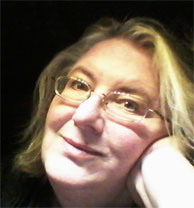Often when a writer starts out on a writing project, one they have conceived of themselves rather than had it requested from an instructor, editor, or employer, they write for themselves. Or perhaps I should say we write for ourselves. It is certainly true of myself, though I won’t claim to do it with the humorous condescension that Gandalf uses in The Lord of the Rings: when answering the question of why he was talking to himself, he says that he chose to “speak to the wisest person present.”
When we tell stories from our hearts, the first draft, at the very least, must come from our own heart. If the author doesn’t love the story, why would anyone else?
In fact, Robert Frost wrote: “No tears in the writer, no tears in the reader. No surprise in the writer, no surprise in the reader” (from “The Figure a Poem Makes”). The power of any story, no matter what type it is, comes from that inner driving insistence of the heart that this story must be told, no matter what.
Now of course, in an Ideal World, that would be true of every piece of writing one tackles. But it isn’t. As mentioned before, we also have to write for instructors, editors, or employers. That is when we have to consider the audience. Who will be reading this piece?
 In his book Win Every Argument, Medhi Hasan gives the following quotation:
In his book Win Every Argument, Medhi Hasan gives the following quotation:
Designing a presentation without an audience in mind is like writing a love letter and addressing it “to who it may concern.” -~~~ Ken Haemer, design expert.
I recently was hired to revise a booklet of eight pages, designed to assist social workers in dealing with clients with a particular condition. As I reviewed the original version of the booklet, what I found was that the layout of the information – much of it conveyed in graphs, charts, and checklists – was challenging to read. But the challenge was not because the information was difficult to comprehend. What was making the booklet difficult for users is that although the layout was esthetically satisfying, it was difficult to read left to right, and top to bottom. Explanations that should introduce points in the graphic were on the right when they would have been better on the left, before the reader’s eyes went to the graphic. The design of the layout did not take into account the intended audience: social workers who need to quickly evaluate something.
This attention to the need of the particular audience is much more important in non-fiction than fiction. With a non-fiction work, the writer should consider who will be reading it. Social workers dealing with a stressful situation, trying to help clients in turmoil sitting in front of them is a very different audience than a symposium filled with academics and medical professionals dealing with developing treatments or discovering causes. The vocabulary and presentation will be different.
With fiction there are different factors to consider in presentation. What is the age group of the intended audience? If it is youngsters, that calls for a slightly different vocabulary than what an adult audience can absorb. But writers should not stunt the vocabulary too much when writing for kids. If the context and usage of the word is clear, they can absorb it as easily as adults might. Just consider the made-up vocabularies of science fiction television shows, like the rebooted version of Battlestar Galactica or Farscape: did anyone need an explanation that “fricking” or “frell” were substitutions for an overused English explicative?
I was recently in a screenwriters’ group where we would do table reads of about 8 to 10 pages of someone’s script. When my turn to be read came round, I had brought in 10 pages from the beginning of a thriller/detective story I had begun several years ago but not completed. I still have the original outline and notes, so I was using the group read to restart myself. After the read-through, the notes were pretty good: I’d overlooked some things in introducing my main character, and I’d over-written scene descriptions (a hazard for screenwriters who are also novelists). Then one of the other members of the group, who is also an actor, asked, “Who is the intended audience?” I just stared a bit blankly, thinking, “It’s still the first draft! I’m the intended audience! Right now, I’m writing to please myself!” When I am writing a first draft, I don’t think about a broader audience.
Later, I realized the person was referring to the “four quadrants” of movie audience demographics: male and female, and both over and under the age of 25 (those desiring to write a hit blockbuster aim for all four quadrants). I don’t worry about that element until later in the process – usually.
But let’s go back to Ken Haemer’s quotation, because the key thing for any piece of writing should be to remember it is a love letter to the audience, whether it is a fantasy adventure for youngsters or an academic thesis on the mechanics of quantum physics. You will need to consider who your audience is before you say “I’m done” with your final draft. Have you conveyed your love of the subject? How about your love for your audience? Both of these need to be blended into whatever it is you intend to write.




